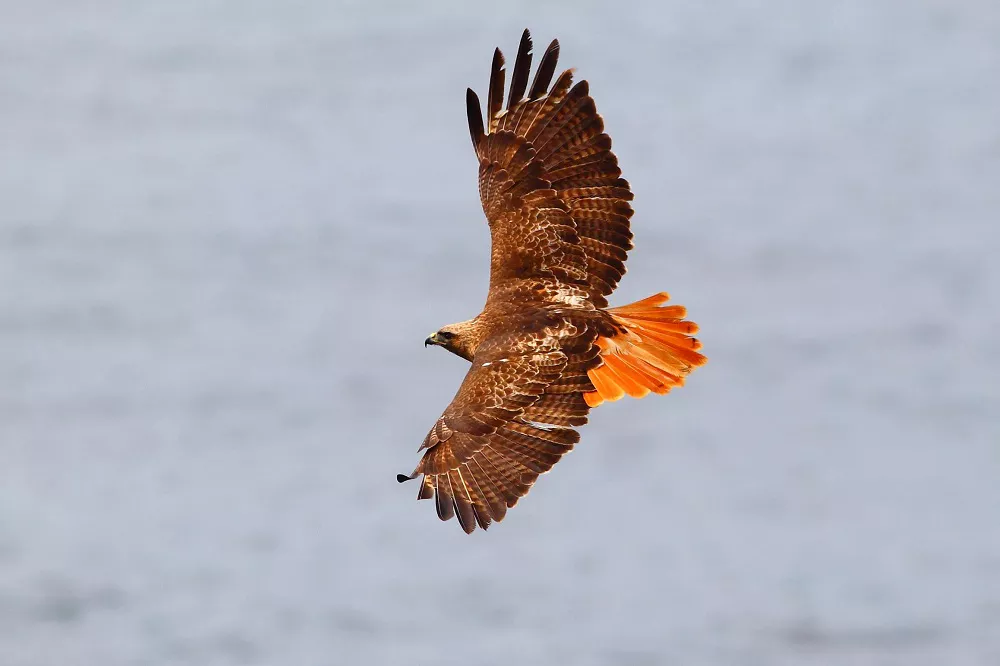The Red-Tailed Hawk (Buteo jamaicensis) is a magnificent bird of prey that symbolizes power, grace, and a primal connection to the natural world. With its regal appearance and impressive hunting abilities, the Red-Tailed Hawk has earned its place as one of North America’s most iconic raptors. In this article, we explore the fascinating characteristics and behaviors that define the Red-Tailed Hawk, shedding light on its significance in the avian kingdom.
Taxonomy and Classification:
The Red-Tailed Hawk belongs to the family Accipitridae, which encompasses various diurnal birds of prey. It falls under the genus Buteo, a group known for their broad wings, soaring flight, and characteristic “buteo” shape. Within the species Buteo jamaicensis, several subspecies exist, each with its unique geographic distribution and slight variations in physical attributes.
Physical Characteristics:
The Red-Tailed Hawk is a large raptor with a robust build and impressive size. Adults typically measure between 18 to 26 inches (46 to 66 centimeters) in length from beak to tail, making them a formidable presence in the skies. They have a wingspan ranging from 43 to 56 inches (109 to 142 centimeters), providing excellent aerial maneuverability and soaring capabilities. The females are usually larger than the males. Red-tailed hawks are known for their distinct reddish-brown tails, which are visible when they soar in the sky. They have dark brown feathers on their back and wings, while their bellies and breasts are white with dark spots.
Plumage and Coloration:
The Red-Tailed Hawk exhibits a range of color variations, but certain key features remain consistent. Most individuals have dark brown to black feathers on their back, wings, and upper body, providing camouflage and blending with their surroundings. The underparts, including the breast and belly, feature lighter plumage in shades of cream, buff, or pale cinnamon.
The hallmark characteristic of the Red-Tailed Hawk is its namesake reddish-brown tail feathers. This prominent feature is most evident during flight, where the red tail stands out against the contrasting dark wings and body. Juvenile Red-Tailed Hawks have a mottled appearance with streaks and less-defined color patterns, gradually acquiring the distinctive adult plumage as they mature.
Habitat and Range:
The Red-Tailed Hawk is widely distributed across North America, from Alaska and Canada down to Mexico and Central America. It adapts well to diverse habitats, including open woodlands, grasslands, deserts, and even urban areas. However, it favors habitats with ample perching sites, suitable prey availability, and suitable nesting locations.
Behavior and Diet:
Red-tailed hawks are solitary birds that prefer to hunt alone. They are diurnal, which means they are active during the day and rest at night. Red-tailed hawks are skilled hunters, and their diet consists mainly of small mammals such as rabbits, squirrels, and rodents. They also eat birds, reptiles, amphibians, and insects. The hawk’s exceptional eyesight allows it to spot potential prey from great distances, often perching on elevated structures to survey the surroundings before initiating a swift and precise dive to capture its target.
Breeding and Conservation:
The Red-Tailed Hawk forms monogamous pairs that engage in impressive aerial courtship displays, showcasing acrobatic maneuvers and calling to establish their bond. Nests are built in tall trees, cliffs, or human-made structures, where the female lays 1 to 5 eggs that are incubated for about a month. Once hatched, the young are cared for and fed by both parents until they fledge and become independent.
The Red-Tailed Hawk is not considered globally threatened and has adapted well to human-altered landscapes. However, habitat loss, illegal hunting, and pesticide exposure remain ongoing challenges for their conservation.
Conclusion:
The Red-Tailed Hawk stands as a remarkable example of nature’s prowess and beauty. With its majestic appearance, impressive size, and remarkable hunting skills, it embodies the essence of a true predator of the skies. By appreciating the physical characteristics, habitat preferences, and hunting behaviors of the Red-Tailed Hawk, we gain a deeper understanding of the ecological role it plays and the need to ensure its conservation for future generations to admire and appreciate.


 Facebook
Facebook  Instagram
Instagram  Youtube
Youtube 